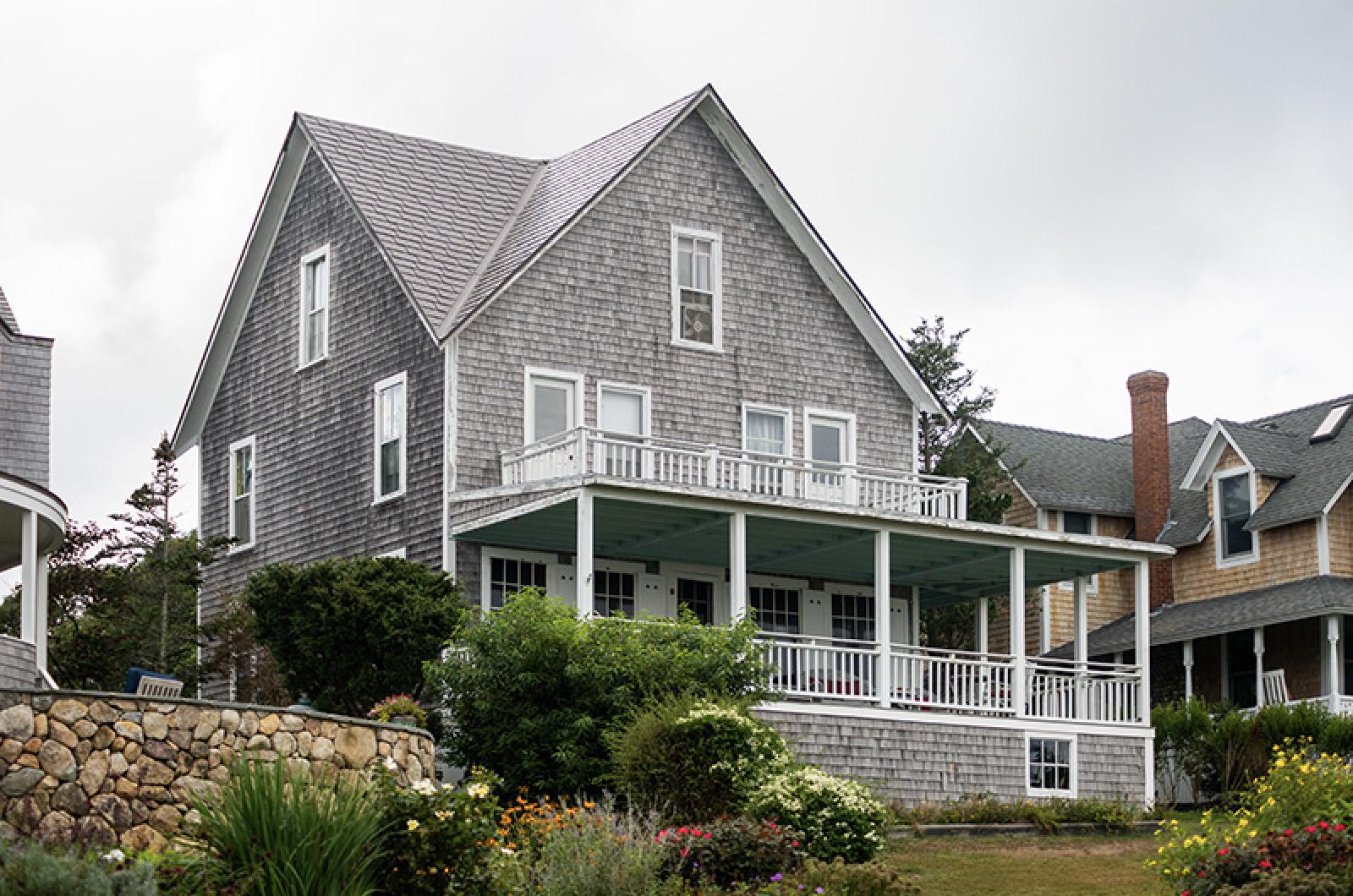The Martha’s Vineyard Commission cleared the way late last week for the demolition of a historic house overlooking East Chop Drive, unanimously approving the plan to raze 19 Mill Square Road and replace it with a new home. The vote sparked more ongoing discussion among commissioners about their own role in reviewing old house teardowns, as demolitions continue to proliferate on the Vineyard, some of them historic buildings.
Dating to 1898, the home on Mill Square Road in the highlands section of Oak Bluffs is listed in MACRIS, the state historic building database. The area where the home is located is still known locally as Institute Hill, formerly the site of a summer institute. Owners Christopher and Abby Sage plan to demolish the house and construct a larger, year-round, four-bedroom, three-and-a-half story home in its place.
A public hearing on the plan opened earlier this summer. Before voting Thursday, commissioners praised the homeowners and their architect Travis Blake for returning with design changes that will make the house more closely resemble the original, including with a new roof pitch and gables. “I compliment and applaud them,” said commissioner Doug Sederholm, who led the land use planning subcommittee post-public hearing review on the project.
Commissioner Fred Hancock agreed, remarking later in the meeting on the benefit of having reopened the written record to allow for further exchange between the applicant and the commission.
“The decision to reopen the written record and allow them to come up with revisions was really really productive ... it’s something we need to keep in mind for the future,” Mr. Hancock said.
The LUPC voted to recommend approval of the demolition with conditions.
On Thursday the commission voted 12-0 to concur. There was little dissent about the project, but during deliberations discussion strayed frequently to broader questions about the standards for reviewing historic home demolitions as developments of regional impact (DRIs). Under MVC rules, demolition requests for buildings that are more than 100 years old are automatically referred to the commission for review.
“At what point is there a threshold at which you have to allow a historic structure to come down,” mused commissioner Ben Robinson. “What is the threshold at which you want to save a historic building . . . on the Island there has been a lenient attitude by zoning boards,” he also said.
“I think we ought to have a separate discussion about demolitions,” longtime commissioner Linda Sibley said. She noted that when the commission enabling act was written more than 40 years ago, the framers could not have contemplated the changes the Island has seen since.
Commission chairman Joan Malkin agreed separate discussion could be in order, but she called for some clear parameters.
“I’m not going to open the door and say let’s talk about demolitions,” Ms. Malkin said. “It’s much more productive if people have specific things that they think should be discussed within the context of demolitions . . . you guys have to come up with some framework, questions, thoughts, ideas.”
The roll call vote on the Mill Square house demolition was as follows: Voting in favor were Jeffrey Agnoli, Trip Barnes, Christina Brown, Fred Hancock, Kathy Newman, Ben Robinson, Doug Sederholm, Linda Sibley, Ernie Thomas, Christine Todd, Jim Vercruysse, Joan Malkin. Commissioners Jay Grossman and Ben Robinson abstained. Commissioners Josh Goldstein and Michael Kim attended the meeting but were ineligible to vote.
In other business Thursday, the commission grappled at length with ways to better streamline its own process when weighing the benefits and detriments of development projects. A subcommittee led by Jim Vercruysse has developed some possible procedural changes.
Discussion ranged broadly and was heated at times, with the commission ultimately agreeing to tweak the subcommittee proposal and continue the discussion.
The commission concluded the meeting by voting to go into executive session to discuss unspecified pending litigation.







Comments (32)
Comments
Comment policy »